Budapest Vacation Service..Budapest Jewish Quarter and Budapest Ghetto Area
Located in the very centre of Budapest, close to Deak ter metro station, is former Budapest Jewish Ghetto area. Although partially renewed, this area still retains a special atmosphere from its recent history.
Also see details of the Free Walking Tour of the Budapest Jewish Quarter
Also see details of the Free Walking Tour of the Budapest Jewish Quarter
www.budapestvacationservice.com email: info@budapestvacationservice.com tel: +36 30 5559678
The Budapest Ghetto 1944 - 1945
One of the darkest periods in the history of Budapest was during the final year of World War II, starting in March 1944 when the Nazi occupation of Budapest began.
In November 1944, the Budapest Jewish ghetto was established.
The ghetto area was located in the old Jewish quarter of the Pest side of Budapest in the vicinity of the Great Synagogue, (blue marker on Budapest Ghetto map) and was surrounded by a stone wall, with rows of barbed wire on the top, erected to prevent people from leaving, and at the same time to stop food and other essentials, such as medicines, from being taken in.
Just as other ghettos in Nazi-occupied Europe, the Budapest ghetto was isolated from the outside world and massively overcrowded, and the Jewish people imprisoned there were denied basic foods, fuels and medicines. This led to many deaths from starvation and disease, resulting in piles of bodies being stacked up in the streets, parks and in the garden of the main synagogue.
As soon as the ghetto was established, selections were made and deportations began to the Nazi death camps, mainly to Auschwitz in Poland. During the 8 months of its existence, the ghetto’s Jewish population was reduced from approximately 200,000 to 70,000 due to a combination of death and deportation.
About 20,000 Budapest Jews were given diplomatic protection by representatives from neutral countries, who were based in Budapest. The most well-known of these include Raoul Wallenberg (Swedish), and Carl Lutz (Swiss), who issued protective passes on behalf of their legations and were able to house people in areas of Budapest, outside of the ghetto, where they set up protected houses, also known as 'yellow star' houses, or in the case of Carl Lutz, in the 'Glass House' (Hungarian name - Üvegház).
Carl Lutz The Glass House Today Protective Schutzpass
Click image to enlarge
On numerous occasions they, and other diplomats and members of the clergy and many ordinary Hungarians risked their own lives and between them, saved many tens of thousands of Hungarian Jewish lives.
Several monuments, dedicated to these men and women, exist in Budapest and numerous other cities throughout the world.
The Budapest ghetto was finally liberated by the Soviet Army in mid-January 1945.
The last remaining section of the ghetto wall, located at Kiraly utca 15, was demolished in 2006.
In 2008 a memorial wall was erected there using some of the original materials. In the garden of the Great Synagogue, a section of the ghetto wall has been placed.
In August/September 2010, a copy of the ghetto wall was built as a permanent memorial at the rear of Kiraly utca 15. This address is a private apartment building and therefore the entrance gate is usually locked, denying access to the memorial wall. If you are patient you can wait until one of the residents enters or leaves and then slip in before the gate closes.
There is a plaque on the front of the building in Kiraly utca and another on the wall itself. The inside courtyard and stairway in the building appear not to have been renovated or decorated since the time of the ghetto, or possibly before, making the atmosphere particularly somber and giving a kind of realistic setting for this ghetto wall monument.
View the slide show on the right to see images of the plaques, wall and surroundings.
One of the darkest periods in the history of Budapest was during the final year of World War II, starting in March 1944 when the Nazi occupation of Budapest began.
In November 1944, the Budapest Jewish ghetto was established.
The ghetto area was located in the old Jewish quarter of the Pest side of Budapest in the vicinity of the Great Synagogue, (blue marker on Budapest Ghetto map) and was surrounded by a stone wall, with rows of barbed wire on the top, erected to prevent people from leaving, and at the same time to stop food and other essentials, such as medicines, from being taken in.
Just as other ghettos in Nazi-occupied Europe, the Budapest ghetto was isolated from the outside world and massively overcrowded, and the Jewish people imprisoned there were denied basic foods, fuels and medicines. This led to many deaths from starvation and disease, resulting in piles of bodies being stacked up in the streets, parks and in the garden of the main synagogue.
As soon as the ghetto was established, selections were made and deportations began to the Nazi death camps, mainly to Auschwitz in Poland. During the 8 months of its existence, the ghetto’s Jewish population was reduced from approximately 200,000 to 70,000 due to a combination of death and deportation.
About 20,000 Budapest Jews were given diplomatic protection by representatives from neutral countries, who were based in Budapest. The most well-known of these include Raoul Wallenberg (Swedish), and Carl Lutz (Swiss), who issued protective passes on behalf of their legations and were able to house people in areas of Budapest, outside of the ghetto, where they set up protected houses, also known as 'yellow star' houses, or in the case of Carl Lutz, in the 'Glass House' (Hungarian name - Üvegház).
Carl Lutz The Glass House Today Protective Schutzpass
Click image to enlarge
On numerous occasions they, and other diplomats and members of the clergy and many ordinary Hungarians risked their own lives and between them, saved many tens of thousands of Hungarian Jewish lives.
Several monuments, dedicated to these men and women, exist in Budapest and numerous other cities throughout the world.
The Budapest ghetto was finally liberated by the Soviet Army in mid-January 1945.
The last remaining section of the ghetto wall, located at Kiraly utca 15, was demolished in 2006.
In 2008 a memorial wall was erected there using some of the original materials. In the garden of the Great Synagogue, a section of the ghetto wall has been placed.
In August/September 2010, a copy of the ghetto wall was built as a permanent memorial at the rear of Kiraly utca 15. This address is a private apartment building and therefore the entrance gate is usually locked, denying access to the memorial wall. If you are patient you can wait until one of the residents enters or leaves and then slip in before the gate closes.
There is a plaque on the front of the building in Kiraly utca and another on the wall itself. The inside courtyard and stairway in the building appear not to have been renovated or decorated since the time of the ghetto, or possibly before, making the atmosphere particularly somber and giving a kind of realistic setting for this ghetto wall monument.
View the slide show on the right to see images of the plaques, wall and surroundings.
Budapest Ghetto Map. Click to enlarge.
The marker shows the location of the Great Synagogue.
The marker shows the location of the Great Synagogue.
The last remaining section of the Budapest Ghetto Wall, demolished in 2006
The yellow star patch, which had to be worn conspicuously by all persons in the Budapest ghetto
Copyright ©2009, All rights reserved
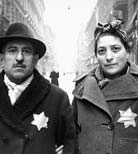
The Glass House (Üvegház), located in Budapest's 5th. District at Vadasz utca 29 played a vital role in accommodating and eventually saving the lives of thousands of Hungarian Jews during the period from mid-1944 until January 1945 Read more.......
To read the remarkable story of one Jewish boy who survived those years in Budapest, please see; http://www.remember.org/jean/index.htm
Also see Heroes of the Hungarian Holocaust: Raoul Wallenberg and other diplomats, members of the clergy and ordinary people who risked their own lives to save the lives of others Read more.........
To read the remarkable story of one Jewish boy who survived those years in Budapest, please see; http://www.remember.org/jean/index.htm
Also see Heroes of the Hungarian Holocaust: Raoul Wallenberg and other diplomats, members of the clergy and ordinary people who risked their own lives to save the lives of others Read more.........
Jozsefvaros Station Budapest. Click on any image to view full size.
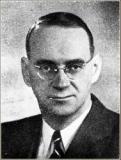
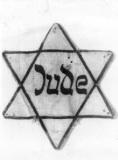

Men, women and children on way to the ghetto watched by local population. Click image to enlarge
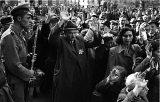
For many thousands of Hungarian Jews, the last place they set foot on Hungarian soil was the Budapest - Jozsefvaros railway station, from where they were deported in cattle trucks to the death camps in Poland. Today the station is disused, desolate and depressing, however bears memorial plaques on the wall close to the station entrance, including a tribute to Swedish Diplomat, Raoul Wallenberg, who saved many hundreds from deportation at that place.
To reach Budapest - Jozsefvaros Station: From Keleti Palyaudvar station take number 24 tram to Orczy ter. The station is opposite the tram stop.
Ghetto wall memorial at Kiraly utca 15, Budapest. Click on any image to view full size.
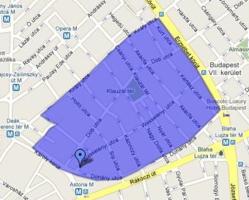


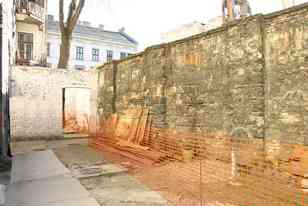
Also see details of the Budapest Great Synagogue in Dohany utca in the Budapest Jewish Quarter and Free Walking Tour of the Budapest Jewish Quarter